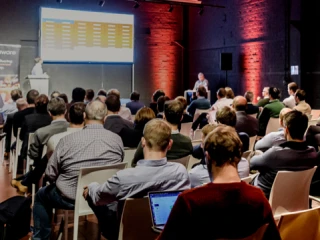/Fair-Data-720x360-(1).webp?mode=autocrop&w=320&h=320&attachmenthistoryguid=e99fb4b1-9f86-4e7b-99b1-97a3f10db176&v=&focusX=367&focusY=305&c=237ff084753dde9c25d5ff2246fdb8edd8feeac643e83ee37f3abea9b667ae53)
On tomorrow’s doorstep - Innovation as a service, FAIR data and benefiting from failure and start-ups
- IT
- internet of things
- artificial intelligence & RPA
‘On tomorrow’s doorstep’ will be a returning feature on our blog. We will use it to report and comment on the latest insights and technology evolutions discussed at CIONet’s conferences, featuring our own experts as well as thought leaders and business leaders from other organizations.
CIONet’s September 28 event took place at the Ter Ham Castle in Steenokkerzeel, close to Belgium’s capital, Brussels. Let’s talk about the highlights and what they may mean for you.


/Topstory2-CIO-June2020-Website-720x360-(1).webp?mode=autocrop&w=320&h=240&attachmenthistoryguid=6eedca38-36ff-41eb-bb64-c823818fda2a&v=&focusX=438&focusY=197&c=5c8fe6dba53df930f9daa367db9b90180caddda5590fe3c13dbe04b2c787c173)
/Topstory1-CIO-June2020-Website-720x360-(1).webp?mode=autocrop&w=320&h=240&attachmenthistoryguid=a1fe907a-a4f3-4143-a719-82e5404f284f&v=&focusX=422&focusY=139&c=8921b13e43baf32a4b2ab86cce00eb8bfd1b94b6a23b8989b5c2843a62bce382)